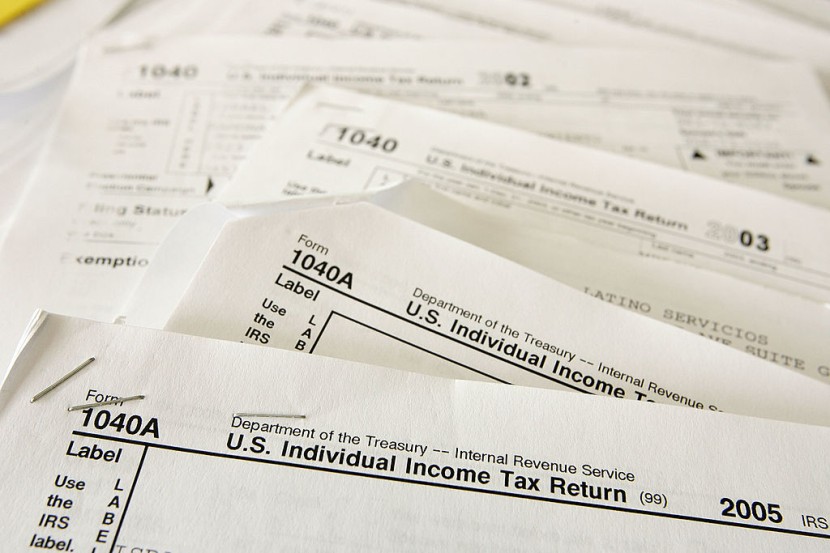A bipartisan deal that includes provisions to boost the Child Tax Credit (CTC) beginning in the current tax season in 2024 has been passed by the House of Representatives. The Tax Relief for American Families and Workers Act of 2024 has already been adopted by Congress, but it still has to pass the Senate and be signed into law by President Joe Biden.
A potential shift in legislation could reshape the landscape of Child tax Credits, with a primary focus on augmenting the repayable amounts and aligning them with inflation rates.The Child Tax Credit, which is now restricted at $2,000, limits the maximum refundable amount to $1,600 per child for the tax year 2023, as per AS US.
Expected Child Tax Credit Increase

A gradual rise of $1,800 for the fiscal year 2023, $1,900 for the fiscal year 2024, and $2,000 for the fiscal year 2025 is anticipated if the proposed legislation is approved. An additional clause in the plan calls for changing this sum to account for inflation.
Moreover, an additional nuance arises, specifying that the $2,000 value of the Child Tax Credit would undergo inflation-based adjustments in tax years 2024 and 2025, rounded down to the nearest $100.
The maximum refundable Child Tax Credit under the current tax system is calculated for each taxpayer by multiplying their earned income (over $2,500) by 15%. The proposed law brings about changes that would force taxpayers to increase their earned income (over $2,500) by 15% and then multiply the resulting amount by the total number of children who qualify. The updated policy will be operative for the 2023, 2024, and 2025 fiscal years.
The IRS provides information on prospective inflation-related changes to the Child Tax Credit for 2024. The dynamic character of tax rules, which are susceptible to modifications via legislative actions, is the warning sign, regardless. The Child Tax Credit (CTC) is structured as follows as of the knowledge cut-off in early 2023:
1. Credit Amount: For 2024, absent legislative alterations, the credit amount per child is anticipated to either maintain its existing level or undergo an adjustment for inflation. Following temporary increases in 2021 due to pandemic relief, the credit amount reverted in 2022 to $2,000 per qualifying child under 17 at the tax year's end.
2. Eligibility: Geared towards parents or guardians with qualifying children, the CTC hinges on the child being a dependent living with the claimant for over half of the year, aged under 17, and possessing a valid Social Security number. Income thresholds exist, gradually phasing out the credit at higher income levels.
3. Income Limits: Full credit is available for single filers earning up to $200,000 and joint filers earning up to $400,000. Beyond these thresholds, the CTC initiates a phased reduction.
4. Refundability: A noteworthy feature that may persist for 2024 is the partial refundability of the credit. If the Child Tax Credit surpasses owed taxes, taxpayers might receive the excess as a refund.
5. Advance Payments: The advance payment program, facilitating monthly CTC payments, was a temporary measure not extended into the laws covering tax year 2023 onwards. Unless new legislation alters 2024 payments, taxpayers will claim their full CTC when filing annual tax returns.
Tax Law Changes
It is imperative for taxpayers anticipating a CTC claim in tax year 2024 to stay abreast of potential tax law shifts and seek guidance from tax professionals regarding eligibility or credit amounts.
While 2021 witnessed a boosted Child Tax Credit within a pandemic stimulus package, the enhanced version lapsed in 2022. The pre-pandemic iteration of the credit remains applicable, emphasizing its value for eligible claimants in upcoming tax returns.
Qualifying for the Child Tax Credit necessitates having a dependent child under 17. Income limits are in place, initiating a phase-out for single filers with a modified adjusted gross income over $200,000 and joint filers at $400,000.
For the 2023 tax year, the Child Tax Credit reaches up to $2,000 per child, with $1,600 potentially being refundable. In 2024, the refundable portion is set to increase to $1,700. However, the confirmed figures for 2024 will only be known when filing taxes next year.
The potential for a legislative overhaul looms, with policymakers advocating for an enhanced, more refundable Child Tax Credit. The proposed changes, if passed, would see a phased increase in the refundable portion - $1,800 for 2023, $1,900 for 2024, and $2,000 for 2025.
As legislative deliberations continue, it's advisable for eligible individuals to explore the potential impact on their tax returns, consult tax professionals for personalized advice, and stay informed about any developments in tax laws, The Motley Fool reported.








